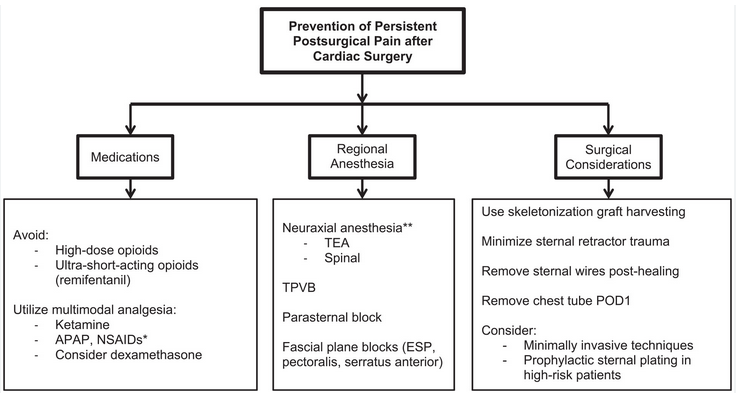Level of Pain among Postoperative Cardiac Patients: Role of Intravenous Paracetamol and Fentanyl
Main Article Content
Abstract
Background: Pain is the most critical symptom that influences the overall recovery of heart surgery patients, yet it is also the symptom that receives the least amount of attention from medical professionals. Patients undergoing major surgery and critically unwell patients frequently receive paracetamol by intravenous administration. In the treatment of post-operative pain, the valuable analgesic characteristics of fentanyl are considered to be standard, and it has been discovered that routine administration is effective in alleviating pain.
Materials and Method: Patients who had recently undergone cardiac surgery were the subjects of a descriptive exploratory investigation. Every single person who took part in the study knowingly and willingly signed their names on the consent papers. The Postoperative Cardiac unit was where the data collection took place. Data were acquired using a sample that was chosen at convenient intervals. Prior to the intravenous infusion of paracetamol and fentanyl, the patient's level of discomfort as well as their vital signs were evaluated. The level of discomfort and the patient's vital signs were evaluated once more after the administration of paracetamol and fentanyl. Using descriptive statistics, the acquired data were investigated and examined in terms of their characteristics.
Before receiving an infusion of paracetamol, the majority of the samples (50%) exhibited mild pain, while 46.7% exhibited moderate pain. However, after receiving an infusion of paracetamol, the majority of the samples (80%) exhibited mild pain. In the fentanyl group, 60 percent of patients had mild pain, 36.4 percent had moderate pain before the infusion, and 86.6 percent of patients had mild pain after the infusion.
The results showed that individuals had a mild to moderate pain level of pain after cardiac surgery, and that intravenous paracetamol and fentanyl were effective in the management of pain among Postoperative Cardiac Patients. Additionally, the results show that vital signs remained stable after the administration of intravenous paracetamol and fentanyl. Conclusions: The results highlighted that individuals had mild to moderate pain level of pain after cardiac surgery, and that intravenous paracetamol and fentanyl
Article Details
References
Choudhuri AH, Uppal R. A comparison between intravenous paracetamol plus fentanyl and intravenous fentanyl alone for postoperative analgesia during laparoscopic cholecystectomy. Anesth Essays Res 2011;5:196-200.
K. A. Sethares, E. Chin, and I. Costa, “Pain intensity, interfere ence and patient pain management strategies the first 12 weeks after coronary artery bypass graft surgery,” Applied Nursing Research. 2013; 26940:174–179
Chiam E, Bellomo R, Churilov L, Weinberg L (2018) The hemodynamic effects of intravenous paracetamol (acetaminophen) vs normal saline in cardiac surgery patients: A single center placebo controlled randomized study. PLoS ONE 13(4): e0195931. https://doi.org/10.1371/ journal.pone.0195931
Apfel CC, Turan A, Souza K, Pergolizzi J, Hornuss C. Intravenous acetaminophen reduces postoperative nausea and vomiting: a systematic review and meta-analysis. Pain 2013; 154: 677–89
Ali MA, Siddiqui S. Is intravenous paracetamol a useful adjunct for intraoperative pain? TheHealth 2012; 3(1): 13-15
Majumdar S, Das A, Kundu R, Mukherjee D, Hazra B, Mitra T. Intravenous paracetamol infusion: Superior pain management and earlier discharge from hospital in patients undergoing palliative head-neck cancer surgery. Perspect Clin Res. 2014;5(4):172–7.
Shimia M, Parish M, Abedini N. The effect of intravenous paracetamol on postoperative pain after lumbar discectomy. Asian Spine J. 2014;8(4):400–4.
Saikat Majumdar, Anjan Das, Ratul Kundu,Dipankar Mukherjee, Bimal Hazra, and Tapobrata Mitra. Intravenous paracetamol infusion: Superior pain management and earlier discharge from hospital in patients undergoing palliative head-neck cancer surgery. Perspect Clin Res. 2014 Oct-Dec; 5(4): 172–177. doi: 10.4103/2229-3485.140557
Shinde M, Anjum S. Educational Methods And Media For Teaching In Practice Of Nursing. Sneha Publication India (Dombivili). 2007.
Shinde M, Anjum S. Introduction to Research in nursing. Sneha Publication India (Dombivili). 2007
Potdar N, Shinde M B, Sadare S. Barriers to Comprehensive Care in Intensive Care Units. International Journal Of Science and Research. 2016;5(8):447-50.
Shinde MB, Hiremath P. Stressors, level of stress and coping mechanism adopted by undergraduate nursing students. International Journal of Nursing Education. 2014 Jul;6(2):231-3.
Mohite N, Shinde M, Gulavani A. Job satisfaction among nurses working at selected tertiary care hospitals. International Journal of Science and Research (IJSR). 2014;3(6).
Shinde MB, Mohite VR. A study to assess knowledge, attitude and practices of five moments of hand hygiene among nursing staff and students at a tertiary care hospital at Karad. Int J Sci Res. 2014;3(2):311-21.
Gulavani A, Shinde M. Occupational stress and job satisfaction among nurses. International Journal of Science and Research (IJSR). 2014 Apr;3(4):733-40.
Shinde M, Mane SP. Stressors and the coping strategies among patients undergoing hemodialysis. Int J Sci Res. 2014;3(2):266-76.
Shinde M, Anjum S. Effectiveness of demonstration regarding feeding of hemiplegia patient among caregivers. International Journal of Science and Research (IJSR). 2014;3(3):19-27.
Desai A, Shinde M, Mohite V. Knowledge of mental illness among caregivers of alcoholic’s. International Journal of Science and Research (IJSR). 2014;3(4):550-7.
Practice guidelines for acute pain management in the perioperative setting: An updated report the American Society of Anesthesiologists Task Force on Acute Pain Management. Anesthesiology 2004;100:1573-81.
Lane GE, Lathrop JC, Boysen DA, Lane RC. Effect of intramuscular intraoperative pain medication on narcotic usage after laparoscopic cholecystectomy. Am Surg 1996;62:907-10
Priyanka Suresh, Aishwarya Emani. Effect of intravenous fentanyl versus intravenous fentanyl and paracetamol in attenuating the hemodynamic response to laryngoscopy and endotracheal intubation. Indian Journal of Clinical Anaesthesia 2022;9(1):185–188
Marek Zubrzycki, Andreas Liebold,1 Christian Skrabal, Helmut Reinelt, Mechthild Ziegler,Ewelina Perdas and Maria Zubrzycka. Assessment and pathophysiology of pain in cardiac surgery. J Pain Res. 2018; 11: 1599–1611. doi: 10.2147/JPR.S162067
Mehran Kouchek, Behnam Mansouri, Majid Mokhtari, Reza Goharani, Mir Mohammad Miri,Mohammad Sistanizad. A Comparative Study of Intravenous Paracetamol and Fentanyl for Pain Management in ICU. Iran J Pharm Res. 2013 Winter; 12(1): 193–198.
Esteve-Pérez N, Iborra-Escalona J, Gómez-Romero G, Sansaloni-Perelló C, Verger-Bennasar AM, Tejada-Gavela S, Riera-Sagrera M, Mora-Fer- nández LC. Effectiveness of patient-controlled analgesia in acute and chronic pain after cardiac surgery: a prospective study. Rev Soc Esp Dolor 2020;27(1):24-36

